Canadian Winter Road Trip Tips
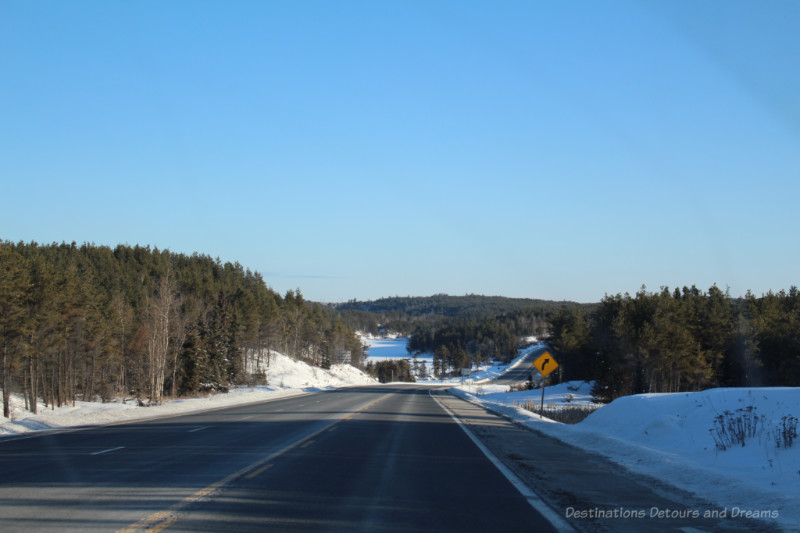
Winter driving tips inspired by a Canadian cross-country road trip
Canada is a large country with diverse scenic landscapes. Road trips are a great way to explore the country in summer. Much of the scenery is still spectacular in winter, but winter driving brings challenges. Many areas you may wish to stop (e.g. some areas within parks, campgrounds) are closed in winter. Still, many people do drive across country in winter for a variety of reasons.
A Canadian road trip in winter requires additional precautions and a particular mindset. I was reminded of this when making a 4,650 kilometre (2,890 mile) road trip across two-thirds of Canada from Vancouver, British Columbia to Sarnia, Ontario in late January/early February. Our trip was purely functional as our daughter was moving and we’d offered to drive her vehicle to her new home. In spite of the focus on just getting there, we did enjoy some great scenery along the way. (Well, maybe as a passenger I enjoyed the scenery a bit more than my husband did as driver.) It took us 7 days of driving to get there. (We actually broke those 7 days up with a day in Alberta visiting family and a week back home in Winnipeg to keep previously scheduled appointments, so the full trip spanned a time period of 16 days.) Two of the driving days involved driving after darkness fell, but mostly we planned to stop by dinner time.
Our road trip experience has prompted me to share a few winter driving tips. For more information on winter driving read the following articles: Winter Driving from the Government of Canada, Safe Winter Driving Tips from the Canadian Automobile Association, and Winter Driving Tips from the American Automobile Association.
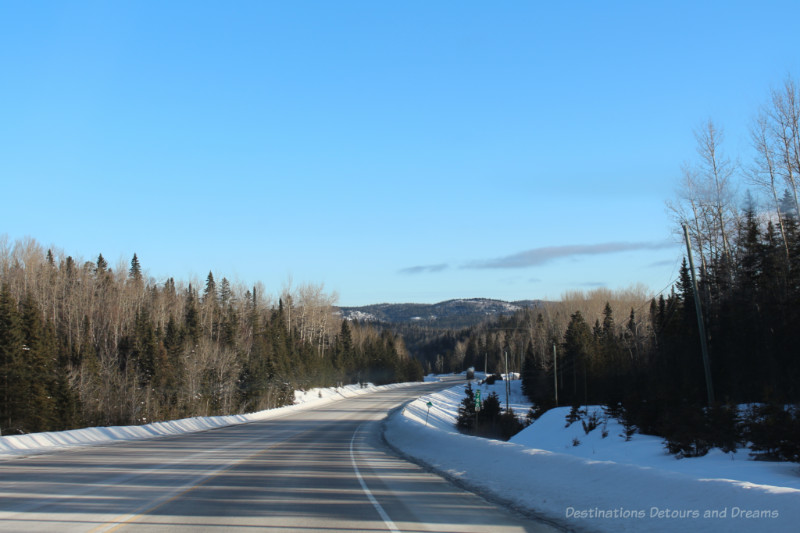
Winter Driving Technique
Winter driving requires different techniques than summer driving. Even people who have lived in winter climates for years need to readjust every year, as evidenced by the horrendous commute on the day winter first blasts into town.
Winter driving is slower. You need to slow down to account for lower traction on snow or ice. You need to accelerate and decelerate slowly to get traction and to avoid skids. Ice builds up at intersections and it will take longer to get going again after being stopped at a red light. On very cold days, exhaust fog from the car in front of you may reduce visibility as you pull away from the light.
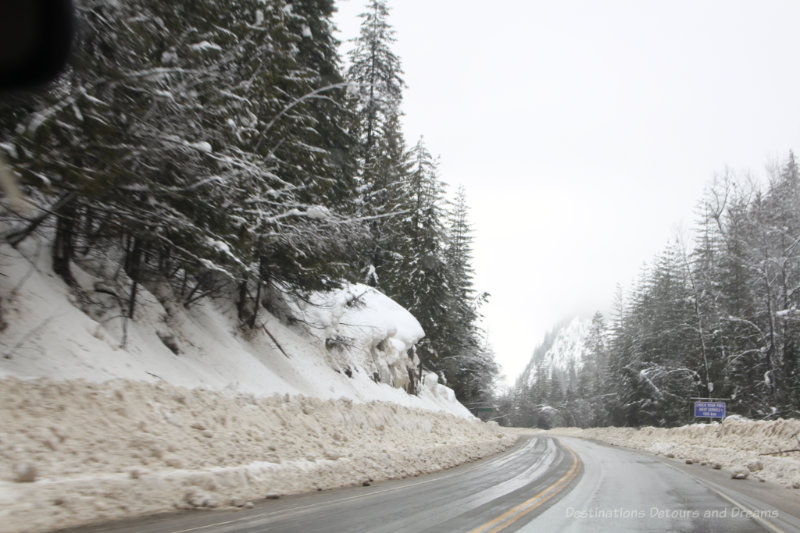
It takes a longer distance to stop. You need to allow more distance between you and the vehicle in front of you. You need to know how to push the brake slowly but firmly and how and when to let up if there is any feeling of the wheels locking up or the start of a skid. Know how your car and brakes react to be best prepared. Here is a good article on winter braking.
Vehicle Readiness
Ensuring your vehicle is tuned up and in good working order before embarking on a road trip is prudent in any season, but there are some extra things to consider in winter. Make sure brakes are in good shape. Make sure your battery is strong and fully charged. Our daughter had an issue with her battery just before our drive and wound up putting in a new one. We are glad she did. There were a couple of very cold nights on our trip. I’m not sure how well her car would have started on the old battery.
Not only are winter tires a good safety measure as they provide better traction and braking, there are some roads, such as most of the roads through British Columbia from October to April, where they are mandatory. Also, make sure tires are properly inflated. Tire pressure goes down in the cold. On one of the nights on the road, the night we spent in Thunder Bay, Ontario, overnight temperature dropped to -30 Celsius (-22 Fahrenheit). When we started the vehicle the next morning, a light came on to warn us one of the tires was low. We planned to add air to the tire at the next stop, but the warning went away after we’d driven a bit and things warmed up.
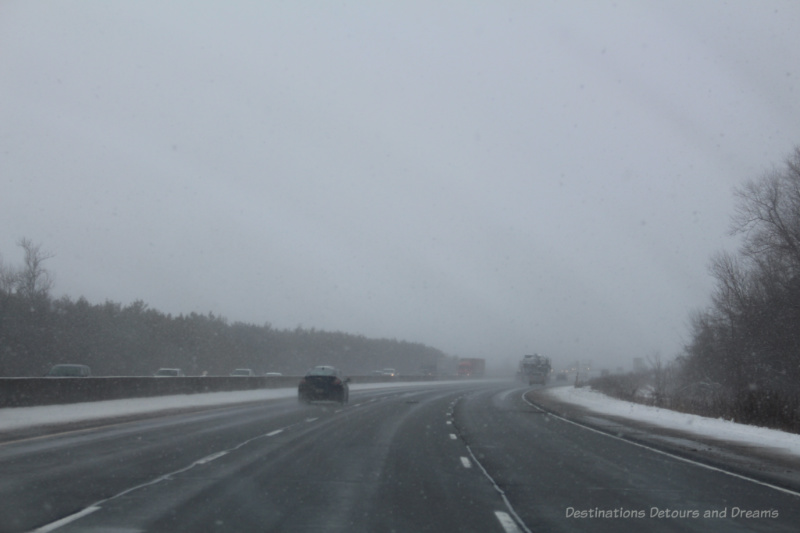
Fill your windshield washer tank with an all-season or winter washer fluid. Check the level and refill as needed during the road trip. We had stretches where wet snow, slushy roads, and splashing from passing semi-trailer trucks resulted in almost constant use of washer fluid and wipers.
Notes About Block Heaters
Block heaters are standard in some parts of Canada, such as the prairies and in northern Canada, but are unlikely to be found in other areas, such as southern Ontario or southern British Columbia. A block heater is an electric heating element installed in the engine that warms engine fluids. Oil gets thick when it gets cold making it harder to start the engine and increasing engine wear. Block heaters are used when temperatures drop to -15 or -20 Celsius and the vehicle will be left in the cold for several hours or overnight. Plugging the heater into an electrical outlet a few hours before starting the vehicle warms the oil enough to make starting easier.
It is possible to do a Canadian winter road trip without a block heater. Our daughter’s vehicle didn’t have one. It started even on that cold Thunder Bay morning, but I suspect it would not have had it still had the old battery.
Last winter we rented a vehicle in northern Alberta. Thinking the rental car would come equipped with a block heater, I asked if the company supplied an extension cord. I was told there was no block heater and that new cars didn’t need them. I was skeptical. The car would be parked overnight on an hotel’s outdoor parking lot. I envisioned an upset call to the rental company one morning when it wouldn’t start. However, it did start, albeit a little roughly, every morning, even in temperatures of -30 Celsius.
Drive To Conditions
On our January drive in variable speed limit sections of Highways 5 and 1 through the British Columbia mountains, digital displays on overhead signs flashed the current speed limit, adjusted for conditions. This was nice, but it is not a common occurrence when driving across Canada. Most of the time it is up to the driver to make decisions about when to slow down and exercise other cautions because of road and weather conditions. You may occasionally encounter a “Drive To Conditions” road sign, but even those reminders will be few and far between.
What does “drive to conditions” means? For one, it means that the posted speed limit may be too high a speed to travel if the road is wet or icy or if visibility is poor. Drive at a speed where you can comfortably handle the car without it slipping or skidding off the road. Allow enough space between you and vehicles in front of you so you don’t run into them should they slow down or stop. Remember that it takes a lot more room and time to stop on slippery, icy roads. If there is fog or blowing snow, have your lights on. Make sure your headlights and back lights are clean. Messy roads can dirty your lights sooner than you may realize. Check and clean them when you stop to refuel so you can see the road ahead of you and people coming up behind you can see you are there.
Cruise control is meant for places where you can drive at a steady speeds, not for windy roads or in heavy traffic. It should not be used on wet or icy roads. If your wheels lose traction and start to spin, cruise control could keep you accelerating and put you into a skid.
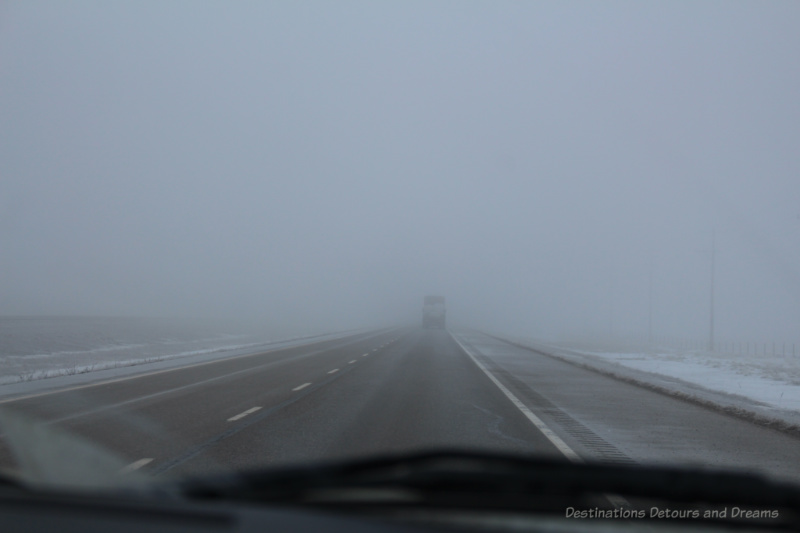
“Drive to conditions” is good advice for all seasons. It’s just that you may have to heed that advice more frequently in winter.
What To Have Inside Your Vehicle
A snow brush and ice scraper are essential. As with road trips in any season, make sure you have water. Food and snacks are recommended to have on hand in case of a breakdown or becoming stranded. Snacks are more than simply an emergency supply for me. I like to have something around to take the edge off hunger if it strikes when we are some distance away from the next town or place to stop for food. The Canadian Automobile Association has a list of recommended items for your winter emergency kit. I’ll admit we didn’t have everything on the list with us, but we did have a number of items. The paper towels came in very handy for wiping off the headlights and mirrors. Fortunately, we never needed to use the shovel, but I would still make sure I had one in a future trip.
Planning And Mapping Your Route
Whether you choose to schedule your trip in advance with nights pre-booked at specific hotels or determine how far you will travel each day as you are on the road, know your limits. Drive only as many hours as you feel comfortable doing. Factor in the frequency and length of stops along the way. Be aware of those long stretches where it might be hours to the major town or city.
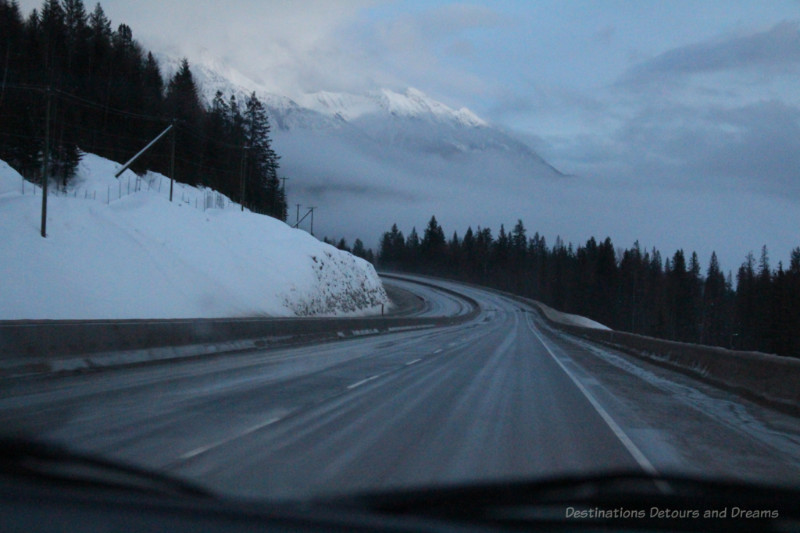
Shortened hours of daylight may impact how long you want to spend driving each day. We’ve done 15 hours of driving in one day in summer when the sun doesn’t set until between 9 and 10 pm. However, we choose not to do that in winter when sunset occurs between 5 and 6 pm . Driving on unfamiliar roads in the dark can be stressful particularly if those roads are windy or through mountainous terrain.
Check weather and road conditions daily. Things can change from day to day. You may need to adjust plans due to inclement weather or road closures. Provinces have websites listing current road conditions. We spent a night in Merritt, British Columbia and planned to drive from there to the Calgary area the following day. In the morning, when I checked road conditions, I discovered that a 142-kilometre section of road from Revelstoke to Golden would be closed for a couple of hours midday for avalanche control work. There is no detour for that route through the mountains. Even if we’d left the hotel right that moment, it was unlikely we’d get to Revelstoke before the closure started. We opted to linger over breakfast and take a more leisurely drive to Revelstoke and then wait in Revelstoke until the road re-opened. The road opened up shortly after we arrived in Revelstoke. We made it through but with a delay that resulted in a couple more hours of night driving than we would have preferred. We were lucky that the closure was only for a couple of hours. An avalanche could have resulted in a closure of a couple of days.
We use a combination of old-fashioned paper maps and GPS on my phone to navigate. We like to see the full context of our day’s planned drive on the paper map before we set out and use the paper map as a general guide. I turn to GPS on my phone to navigate inside a town or get us to our hotel. If you are someone who relies solely on cellular GPS, be aware you may encounter sections without cell service. I was surprised to find we encountered very few “no service” zones on our route through the British Columbia mountains, but we had long stretches in northwestern Ontario without service.
I advise caution in relying solely on GPS especially when away from major routes. Occasionally stories about people being led disastrously astray by blindly following GPS hit the news. Although this can happen in any season, the impact of being stranded in an isolated place in winter can be more severe.
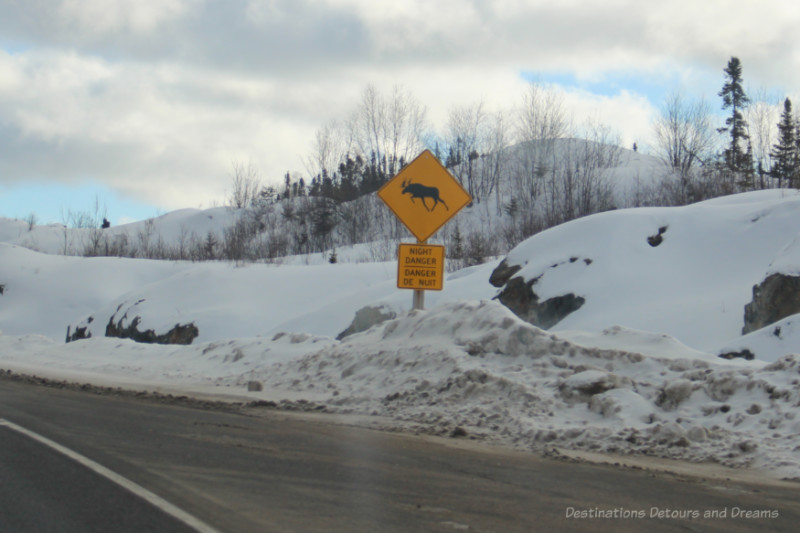
Patience And Flexibility
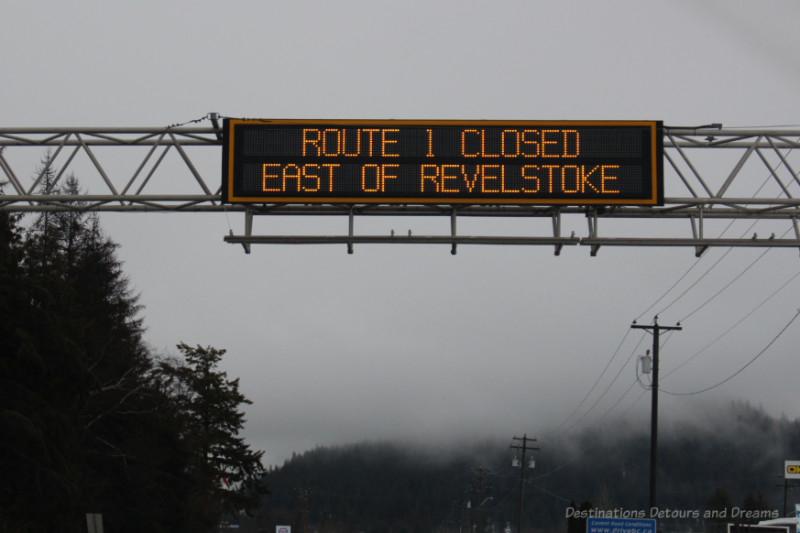
Patience and flexibility are always good travel companions. They are essential on a winter road trip. Road closures or dangerous driving conditions due to storms and inclement weather may necessitate trip delays or rerouting. Be prepared to spend an extra day in a town along the way if necessary.
Spectacular Scenery
When you read about the necessary precautions and the potential dangers, you may wonder why anyone would even attempt a Canadian winter road trip. I’ll admit we are in no hurry to do another winter road trip. It has its stresses. Someone with no winter driving experience may want to reconsider road trip plans or limit driving to “safer” sections.
In spite of the challenges, many people do drive across sections of Canada in the winter for a myriad of reasons. Whatever those reasons are, they will be greeted with spectacular scenery in many parts of the drive. I am well aware of how beautiful much of Canada is in summer. I was delightfully surprised to discover how scenic the landscape can be in winter. I will end this post with a few photos I took along the way.
Never miss a story. Sign up for Destinations Detours and Dreams free monthly e-newsletter and receive behind-the-scenes information and sneak peeks ahead.
PIN IT
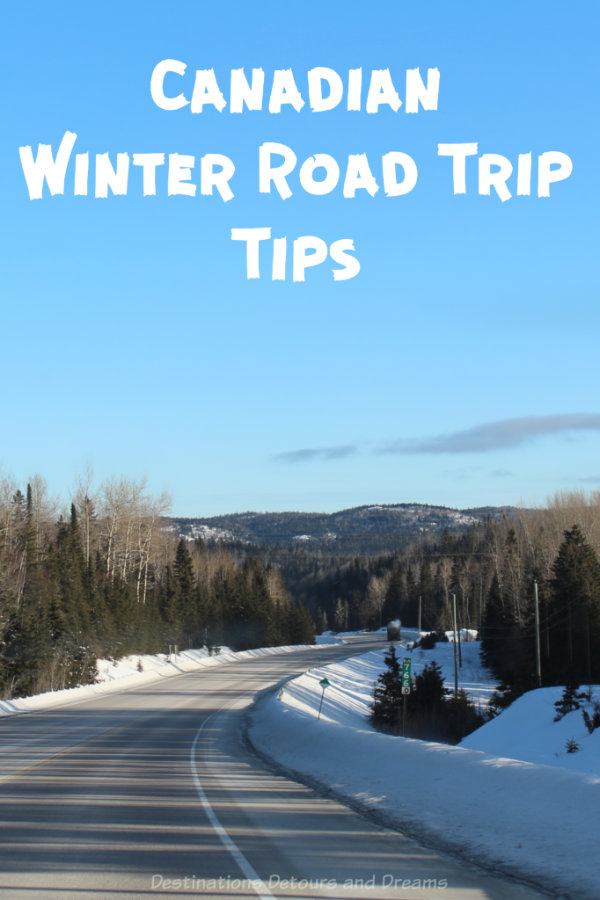

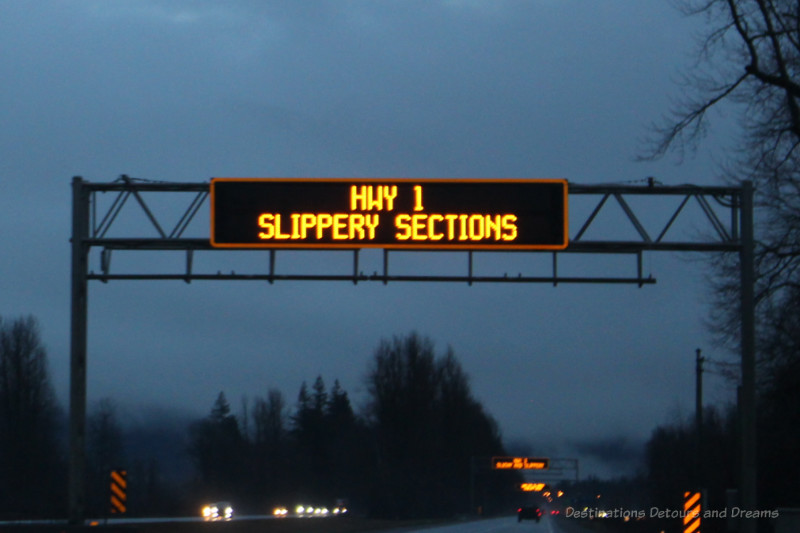
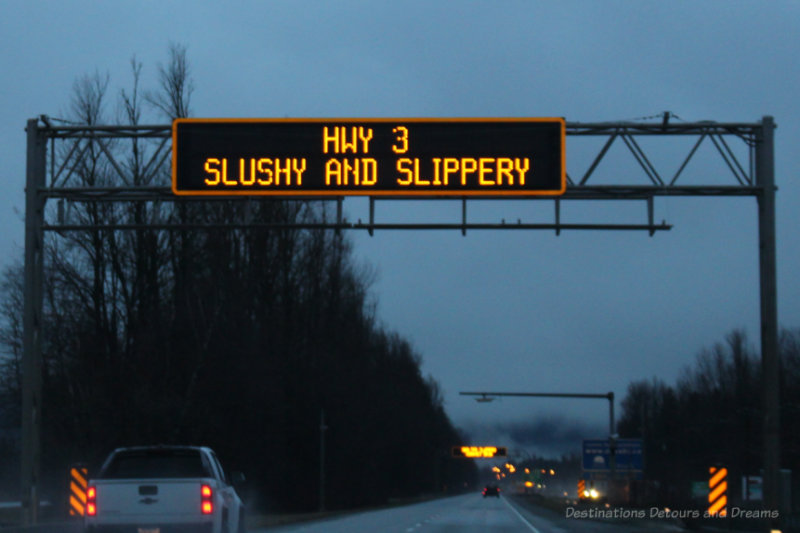
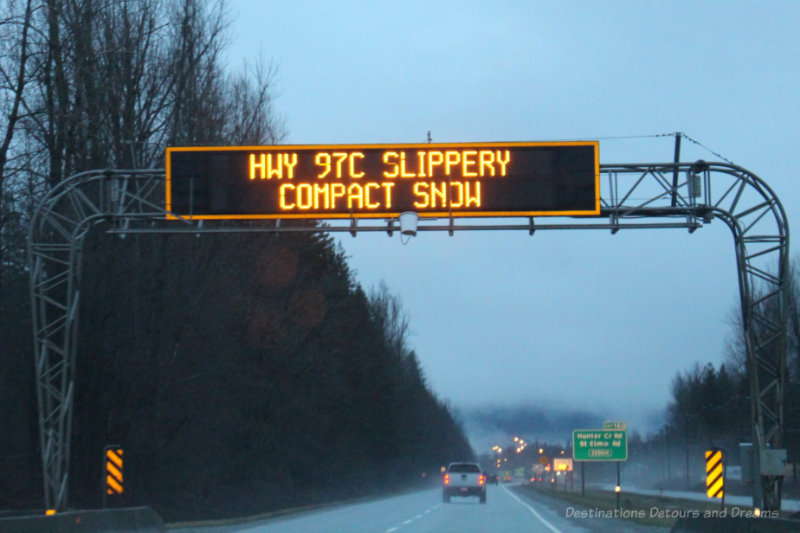
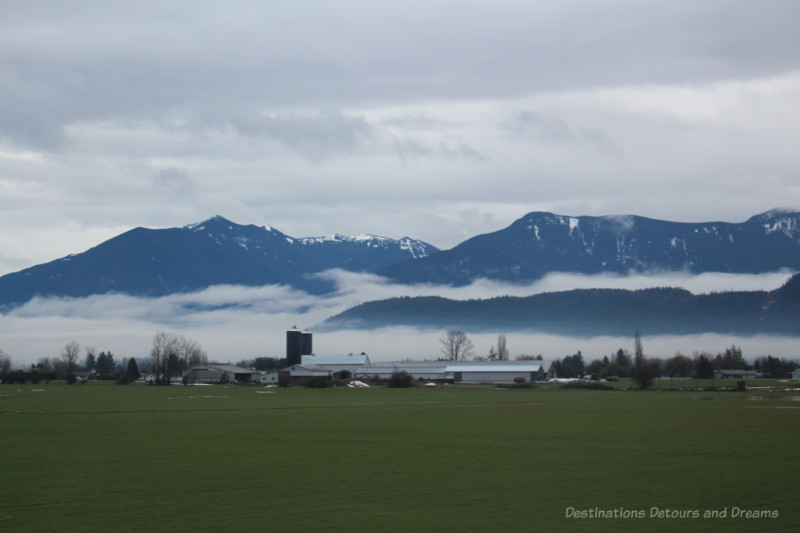
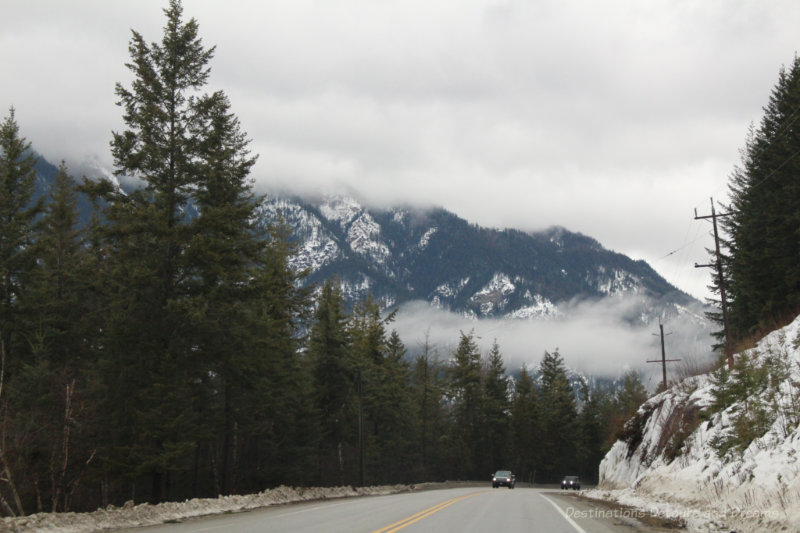
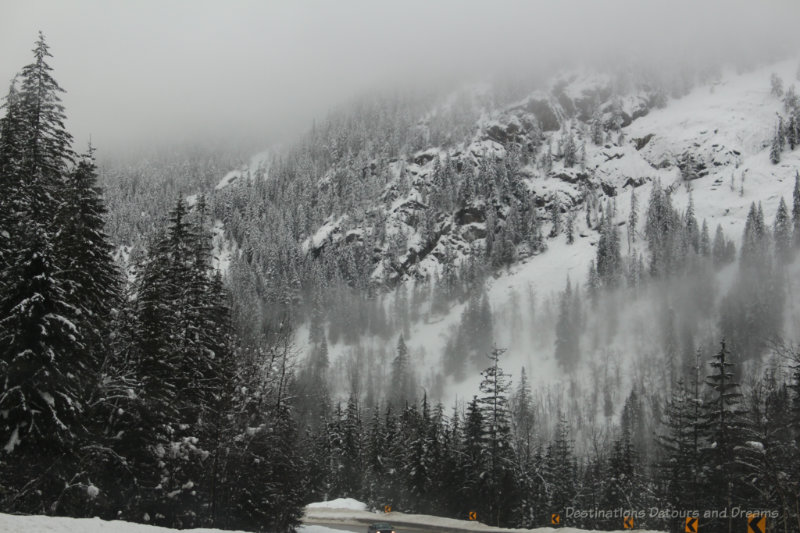
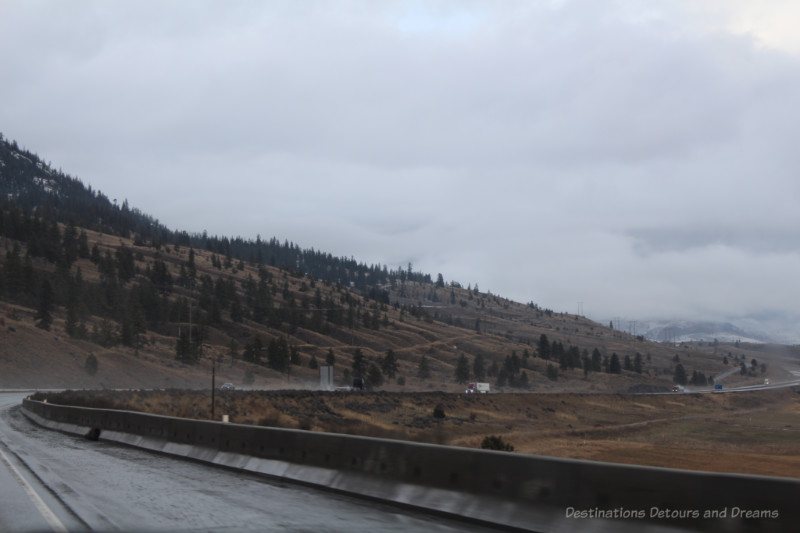
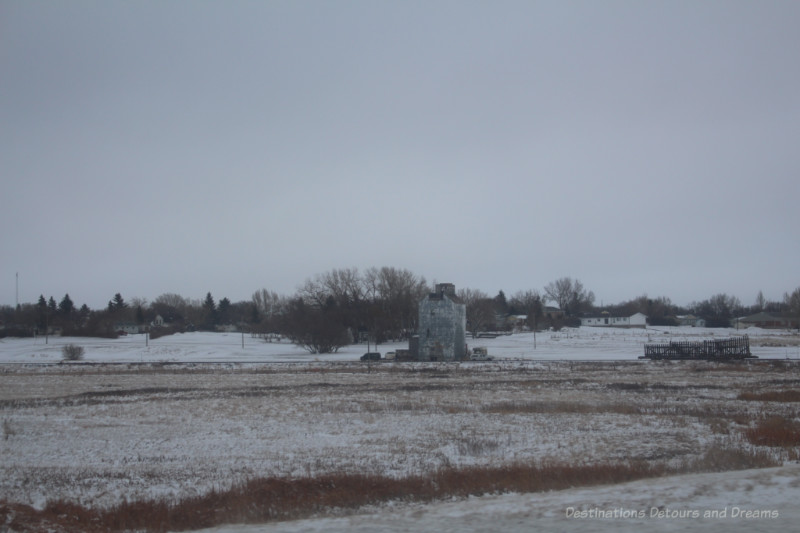
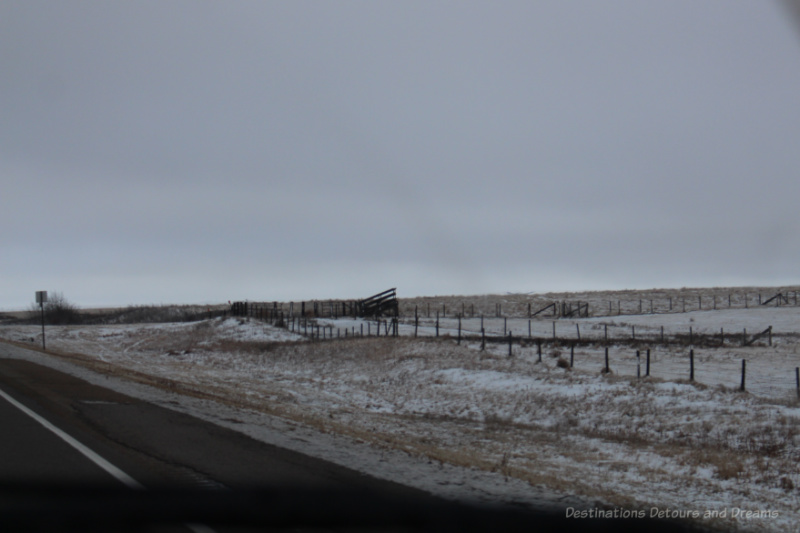
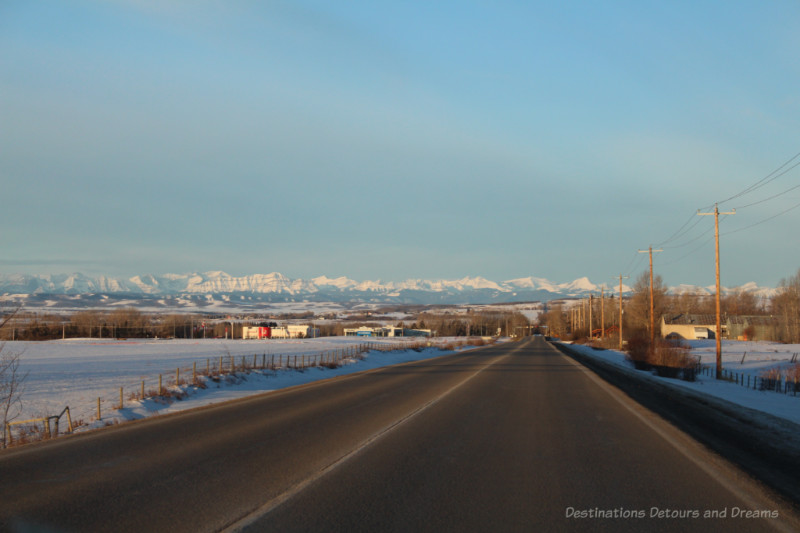
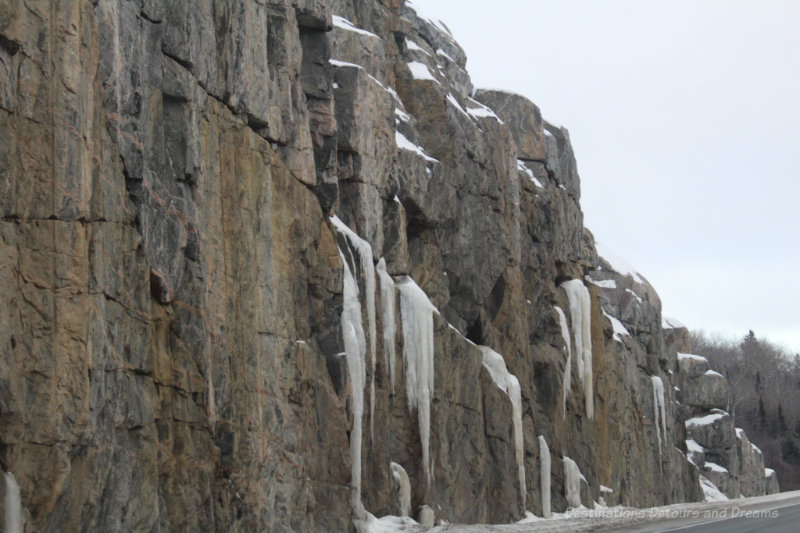
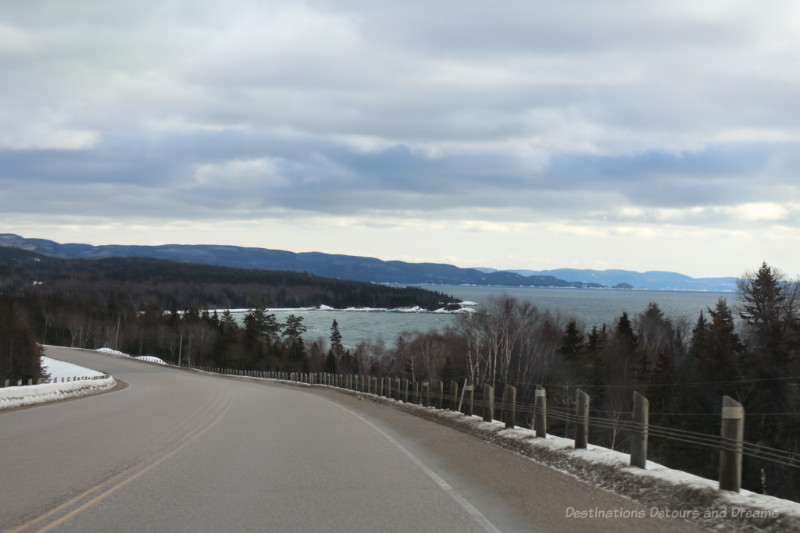
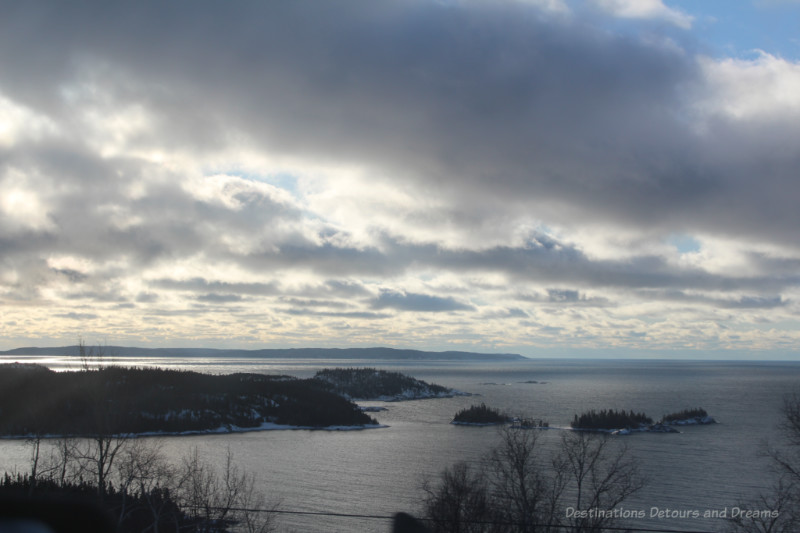
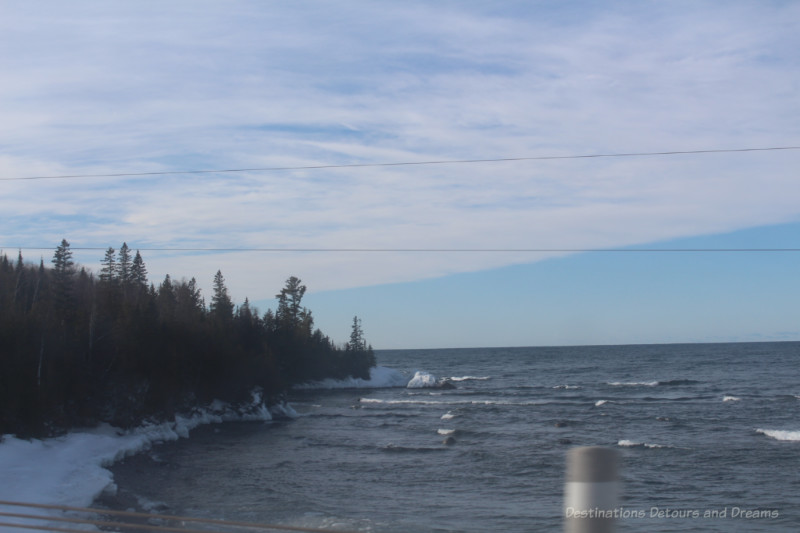
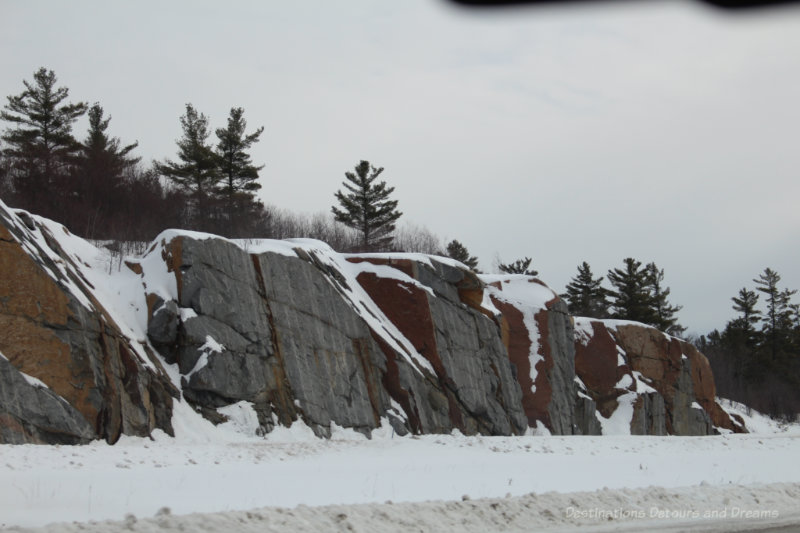
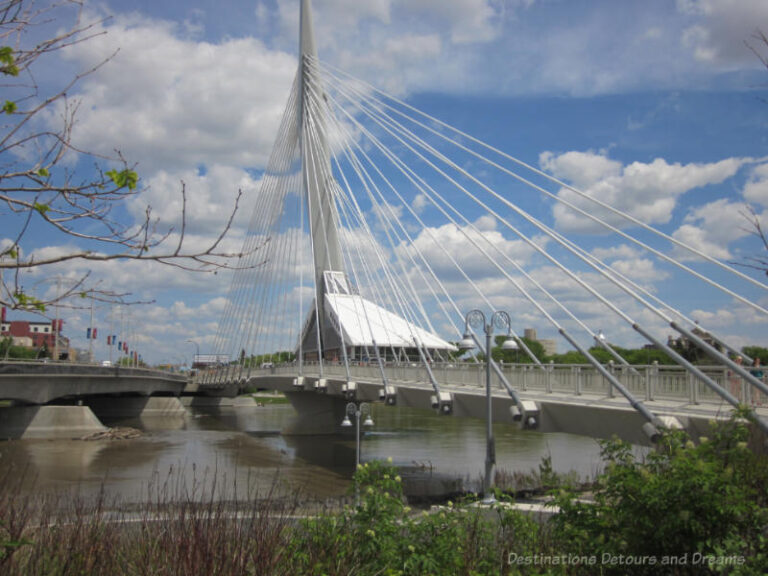
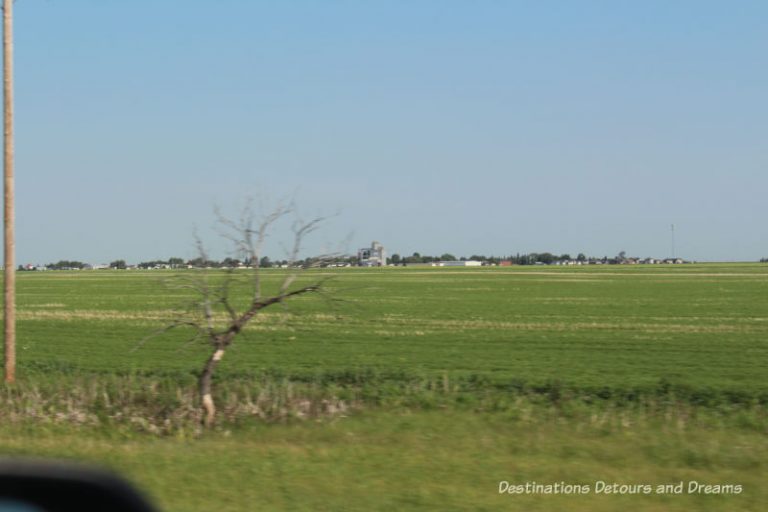
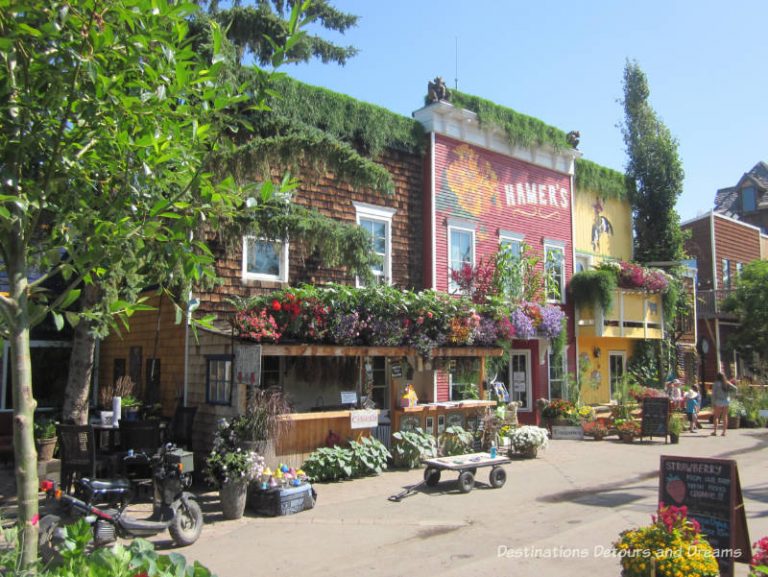
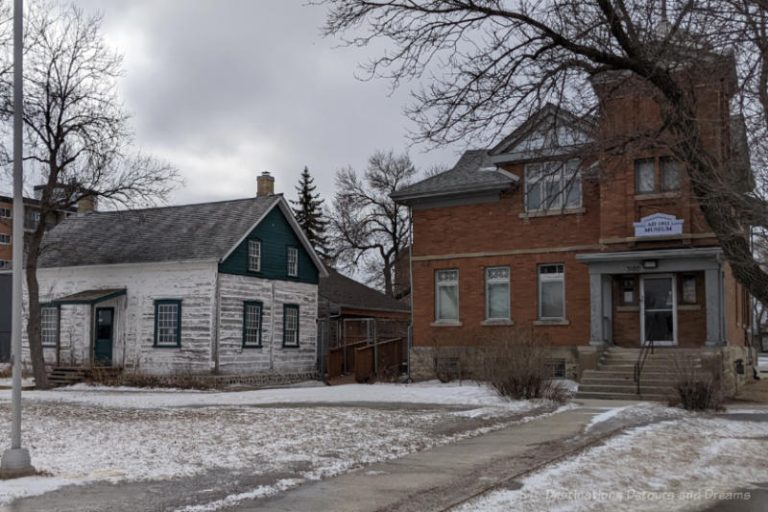


All good advice. But I’ll take that ride in the summer.
Ken, wise choice. Summer offers less stressful driving and more attractions to stop at and visit.